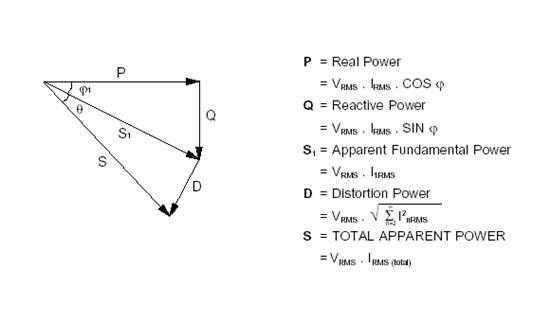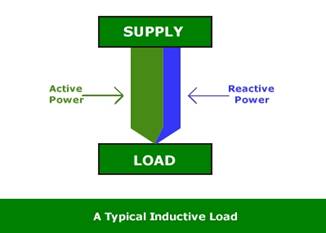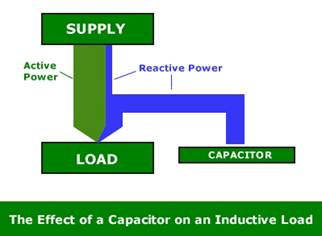| EnviroVAr Sistema de Controle
de Fator de Força O EnviroVAr Sistema de correção de
poder de força fornece eficiente compensação de forca reativa
em toda area, industrial, comercial e Varejo de grande porte,
onde se tem um custo execessivo com enérgia ou onde a corrente
disponivel seja limitada e o custo de reposição de transformadores
e suprimento de enérgia sejam proibitivos. . O Problema A maioria de cargas elétricas
trifásicas extraem não somente o poder ativo (quilowatt, a
parte que faz o trabalho útil da fonte, mas igualmente reativa
(poder do kVar, exceto o do Wattless’) os exemplos destas cargas
seriam motores de indução, Ignição do motor (AC e DC), fontes
de alimentação do interruptor-modalidade, e a maioria dos circuitos
de ignição. |
Para
simplificar e mostrar um exemplo em um motor de indução,
onde o poder ativo e extraido para que se faça o trabalho,
enquanto o poder reativado o usado pela bobina do (stator)
(parte fixa do motor) para criar o campo magnético. Campo
magnético essencial para o funcionamento do motor, esse porém
nao faz o trabalho, so permite que haja a transferencia de
poder do stator para o rotor. A demanda total de alimentação para
uma carga desse tipo e chamada força aparente. É a soma dos vetores
de ambos componentes: Ativo e reativo. O “fator de força” de uma
carga e a proporção (razão) do poder ativo para o poder aparente,
(kW-quilowatt para kVA Ampere Reativo) algumas vezes
referente ao Cos (coseno) (f). Quando extrai-se uma carga de
uma fonte alimentadora do poder reativo, e dito que fator de
poder esta vagaroso e quando for transportada pela fonte dize-se
que o fator de forca esta liderando. Essa e a referencia a fase
da corrente da carga em respeito ao fornecedor de voltagem. Essa e a “Disposição do Fator de Forca” ou DPF comumente conhecida como “Fator de Força” levando-se em consideração a frequencia dos componentes da voltagem e corrente. |
When seeking to improve the power factor of a load, what is actually
being done is to supply a proportion of the reactive power demand
of this load locally. This results in a greater proportion of active
current being drawn from the supply. |
|
|
Physical Benefits of Power Factor Correction The reduction in demand on the supply from the installation of Power Factor Correction equipment results in:
Contractual benefits of Power Factor Correction
Financial Benefits of Power Factor Correction
EnviroVAr systems are available as both "standard" systems and also as "detuned" systems with additional inductive reactive filters to limit harmonic currents within a circuit. For a full understanding of these systems go to the links above and then contact your local EMS (European) representative to arrange a site survey to best advise you as to how you can benefit from effective power factor correction |
|
|
|


